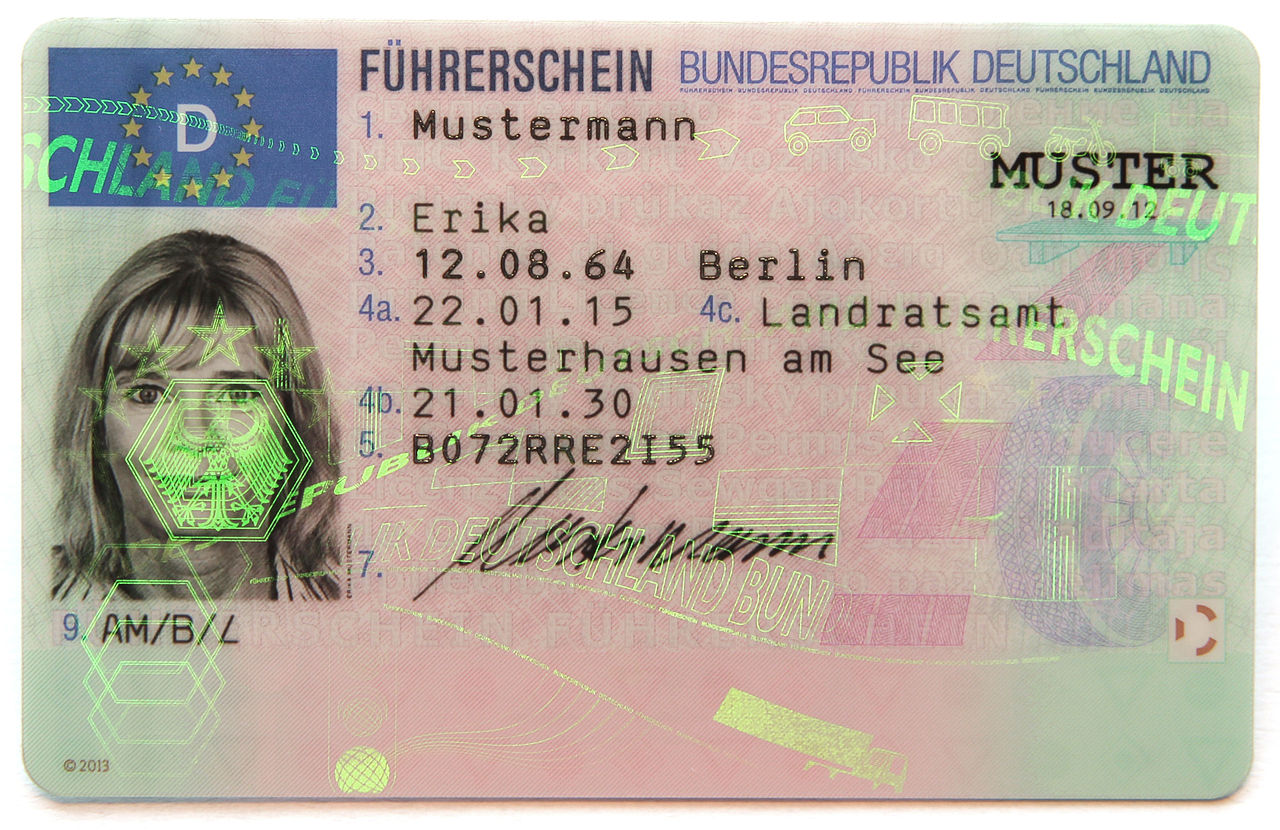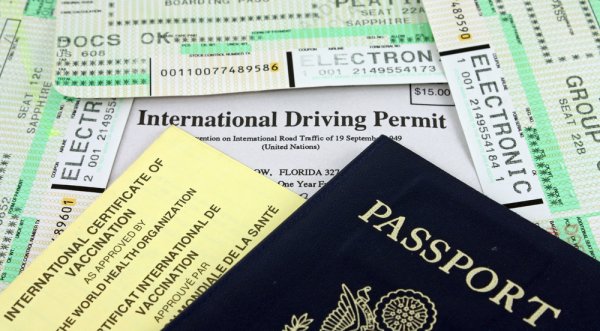Driving and Autos: Driving and Driver's License
People in Germany drive on the right-hand side of the road.
Requirements for Locals
A German driver’s license is called a Führerschein, and is issued by the Führerscheinstelle. Each province has its own Führerscheinstelle website; below are links to those in select provinces:
- Frankfurt Am Main: www.frankfurt.de/sixcms/detail.php?id=2943&_ffmpar%5B_id_inhalt%5D=102239
- Duesseldorf: www.duesseldorf.de/kfz/fuehrerschein
- Muenchen: www.muenchen.de/rathaus/Stadtverwaltung/Kreisverwaltungsreferat/Verkehr/Fuehrerschein.html .
To apply for a driver’s license, submit the following to your local Führerscheinstelle:
- An application form for a German driver’s license
- A passport or ID card and two extra photos
- A statement from your driving instructor certifying that you have passed all required exams
- Proof of having passed an eight-hour first aid course, available through the Deutsches Rotes Kreuz or Malteser
- Proof of having passed a medical vision test within the past two years
Exact requirements may vary depending on your Führerscheinstelle, which German state you live in, and other factors, so call ahead.
Note that procedures are different for motorcycle, bus, and truck licenses.
Written and Road Test
To earn a Führerschein, you must take a full driving course at a Fahrschule, or driving school. These courses take approximately three months to complete. The typical course consists of 14 classroom sessions and at least 12 driving lessons.
Some Fahrschules offer special programs for experienced drivers that include fewer classes. These can be much cheaper than the typical program designed for first-time German drivers.
You’ll then need to take written and practical exams. The written exam is multiple-choice and can be done in English, although the road test will usually be conducted in German. The multiple-choice test is known for being fairly difficult, so test takers are advised to take it seriously.
Residence
You must be a resident of Germany to obtain a German driver’s license.
Age
You must be at least 18 to obtain an adult driver’s license in Germany, and 17 to earn a learner’s permit that will allow you to drive with adult supervision.
Identification
You will need a passport or German ID card, along with two other passport photos as ID.
Fee
Expenses include approximately €150 for the driving test and €80 for the written test, although rates can vary. Classes can cost anywhere from a few hundred to a thousand Euros or more.
Other Requirements
You must pass a first aid course and a vision test to get a German license.
Requirements for Foreigners
Driving Using a Foreign License
Your foreign driver’s license is valid in Germany for up to six months. After that, you must either exchange your license for a Führerschein (if your country has a license exchange agreement with the German government) or apply for a new German license following the procedure described below.
If you plan on staying more than six months but no more than a year, your local Führerscheinstelle may be willing to extend the period of time for which your foreign license is valid to cover your stay. You will need a certified translation of your foreign license, as well as proof of the length of your stay, such as an employment contract or a departing plane ticket.
While driving with a non-German driver’s license, you must carry a German translation. You can get authorized translations from the Allgemeiner Deutscher Automobile-Club E.V. (ADAC).
Obtaining a Local License
You are required to get a German license if you will be staying for more than a year. To do so, you must prove that you have lived in the country that issued your foreign license for at least 185 days without interruption.
In some cases, you may be able to easily exchange your foreign driver’s license for a German Führerschein. If your country has a license exchange agreement with the German government, you have up to three years from when you establish residency in Germany to exchange your license. After three years, you must go through the same process locals do, including taking classes and passing written and practical exams.
For citizens of countries with a license exchange agreement with Germany, exchanging your foreign driver’s licenses for a German license is easy. The Allgemeiner Deutscher Automobile-Club E.V. (ADAC) has a list of reciprocal countries.
For Americans, licenses from only some states can be exchanged. Twenty-seven US states plus Puerto Rico have full reciprocity agreements; ten have partial agreements where applicants must pass only the written test. Check with the US Embassy to find out if your state has a partial or full reciprocity agreement with Germany. Note that if you are living in the German states of Hamburg, Hesse, Saarland, Saxony-Anhalt, or Schleswig-Holstein, you can exchange your US license for a German one, regardless of which US state issued your license.
Exchanging your foreign license for a German one is usually fairly straightforward. However, each Führerscheinstelle has different requirements regarding the documentation you’ll need. It’s best to call ahead, and record the name of the person you speak to. If you’re not sure who to call, dial 115.
If you cannot exchange your foreign license, you must apply for a local license. To apply for a driver’s license, submit the following to your local Führerscheinstelle:
- An application form for a German driver’s license
- A German residence permit
- A copy of your foreign driver’s license, translated into German by an approved translator
- A passport or ID card and two extra photos
- A statement from your driving instructor certifying that you have passed all required exams
- Proof of having passed an eight-hour first aid course, available through the Deutsches Rotes Kreuz or Malteser
- Proof of having passed a medical vision test within the past two years
Exact requirements may vary depending on your Führerscheinstelle, which German state you live in, and other factors, so call ahead.
Note that procedures are different for motorcycle, bus, and truck licenses.
European Union Citizens
If you are a citizen of a European Union (EU) country, you are legally able to drive anywhere in the EU using the license issued by your home country, including Germany. Rules for issuing licenses as well as the physical form of the license have been harmonized among all EU countries.
International Driving Permit
If you do not plan on being in Germany for more than six months, you may want to consider getting an International Driving Permit (IDP).
An IDP includes your name, photo, and basic information in ten languages. When carried together with a foreign license, it can serve as local identification in addition to permitting you to drive. It is valid in over 150 countries. The IDP is only valid when carried in conjunction with a driver’s license issued by your home country. An IDP is valid for 12 months from the date of issue.
Australia
If you are an Australian citizen, you must have a valid Australian driver’s license to get an IDP. The local Australian Automobile Association (AAA) office issues IDPs: www.aaa.asn.au/touring/idp.htm.
Canada
To get an IDP in Canada, you must be at least 18 years old and have a valid Canadian provincial driver’s license. The Canadian Automobile Association issues IDPs: www.caa.ca/idp.
The United States
To obtain an IDP in the US, you must be over the age of 18 and have a valid US driver’s license. An IDP can be obtained from any Automobile Association of America (AAA) office or by mail if you are already overseas. For more information, visit the AAA website: www.aaa.com/vacation/idpf.html.
Copyright © 1993—2025 World Trade Press. All rights reserved.

 Germany
Germany 
